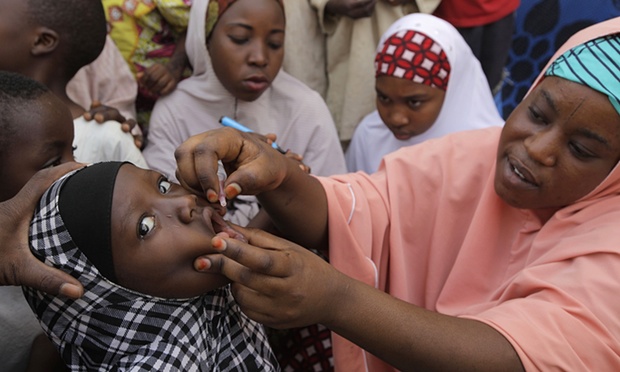A woman administering a vaccine to a child
The World Health Organisation (WHO) says the global childhood immunisation coverage stalled in 2023.
In a report on Monday, the organisation said the low coverage has left 2.7 million additional children un- and under-vaccinated.
The WHO used vaccination against diphtheria, tetanus and pertussis (DTP) in 2023 as a key marker for the global immunisation coverage.
The organisation said the number of children who received three doses of the DTP vaccine stalled at 84 percent (108 million).
Advertisement
It added that the number of children who did not receive a single dose of the vaccine increased from 13.9 million in 2022 to 14.5 million in 2023.
The WHO said the data underscores the need for ongoing catch-up, recovery and system-strengthening efforts.
“More than half of unvaccinated children live in the 31 countries with fragile, conflict-affected and vulnerable settings, where children are especially vulnerable to preventable diseases because of disruptions and lack of access to security, nutrition, and health services,” the report reads.
Advertisement
“Additionally, 6.5 million children did not complete their third dose of the DTP vaccine, which is necessary to achieve disease protection in infancy and early childhood.
“These trends, which show that global immunization coverage has remained largely unchanged since 2022 and — more alarmingly — has still not returned to 2019 levels, reflect ongoing challenges with disruptions in healthcare services, logistical challenges, vaccine hesitancy and inequities in access to services.”
‘LOW VACCINE COVERAGE FUELLING MEASLES OOUTBREAK’
The WHO said its data shows that vaccination rates against measles stalled, with only 83 percent of children worldwide receiving their first dose of the measles vaccine through routine health services in 2023.
Advertisement
“These figures fall short of the 95% coverage needed to prevent outbreaks, avert unnecessary disease and deaths, and achieve measles elimination goals,” the report reads.
“Over the last five years, measles outbreaks hit 103 countries — home to roughly three-quarters of the world’s infants. Low vaccine coverage (80% or less) was a major factor.
“In contrast, 91 countries with strong measles vaccine coverage did not experience outbreaks.”
Advertisement










